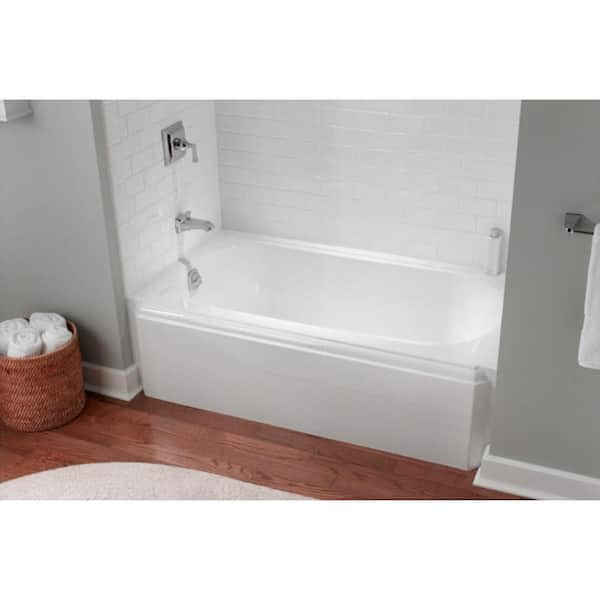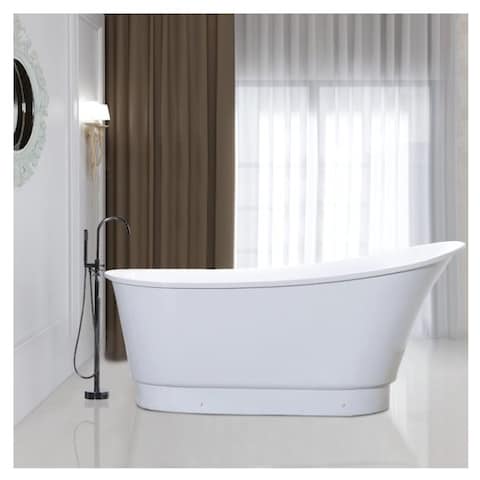How to Install a Tub (Step By Step).
How to Install a Tub (Step By Step).
Blog Article
On this page in the next paragraph you can locate additional incredibly good insight about A Step-by-Step Guide to Installing a Bathtub.

Installing a tub isn't exactly brain surgery, however it does require strong plumbing, carpentry, and occasionally, tiling skills. Changing an old bathtub with a brand-new one is additionally a moderately tough job. If the old bathtub is easily accessible, the task can move easily; if you need to open a wall surface to remove the old bathtub and place the new bath tub, the task is a lot harder. In either situation, the task is within a house handyman's abilities, although you will need an assistant to move out the old tub as well as set in the new one. See to it you have qualified on your own for the job and also are comfortable trying it. Rather than employing a contractor to take over a halfway-completed task, it is better to take into consideration employing one prior to you begin. Opportunities are you might need a specialist plumber to make tube connections.
This post will certainly assist you set up a brand-new bathtub in your restroom if you have actually currently purchased a brand-new tub and also don't require to change the plan of your previous water supply pipes.
Your devices and also material list should make up the following:
Removing Old Taps
If you require to replace old faucets with brand-new ones as a part of your installation, after that the first thing you need to do is disconnect the supply of water. After doing so, switch on the faucets to drain pipes any water staying in the system. The procedure of getting rid of the existing faucets can be quite problematic because of the limited accessibility that is frequently the situation.
Make use of a container wrench (crowsfoot spanner) or a faucet tool to reverse the nut that attaches the supply pipelines to the faucets. Have a fabric all set for the continuing to be water that will certainly come from the pipes. When the supply pipelines have actually been gotten rid of, use the same tool to loosen up the nut that holds the faucets onto the bath/basin. You will certainly require to quit the single faucets from transforming throughout this procedure. As soon as the faucets have actually been gotten rid of, the holes in the bath/basin will need to be cleansed of any old securing substance.
Prior to going on to fit the brand-new faucets, compare the pipe connections on the old taps to the brand-new faucets. If the old faucets are longer than the new faucets, after that a shank adapter is needed for the brand-new taps to fit.
Fitting New Taps
If the tails of the new taps are plastic, then you will require a plastic connector to prevent damage to the string. One end of the port fits on the plastic tail of the faucet as well as the other end offers a connection to the existent supply pipes.
If you need to fit a monobloc, after that you will certainly call for reducing couplers, which connects the 10mm pipeline of the monobloc to the standard 15mm supply pipe.
Next, position the tap in the mounting hole in the bath/basin guaranteeing that the washers remain in area in between the faucet and the sink. Secure the tap in place with the producer offered backnut. When the tap is securely in place, the supply pipes can be connected to the tails of the taps. The taps can either be connected by using corrugated copper piping or with normal tap adapters. The previous kind must be linked to the tap finishes initially, tightening up only by hand. The supply pipelines can later on be linked to the various other end. Tighten both ends with a spanner after both ends have been connected.
Mounting the Bath tub
Utilizing the two wooden boards under its feet, place the bath tub in the called for placement. The wooden boards are valuable in evenly spreading out the weight of the tub over the area of the boards instead of focusing all the weight onto 4 tiny factors.
The next objective is to make sure that the tub is leveled all round. This can be accomplished by checking the spirit level and also changing the feet on the bathtub up until the spirit level reviews degree.
To install faucets, fit the bottom of the furthest adaptable tap adapter to the suitable supply pipe by making a compression sign up with; then do the very same for the other faucet.
Turn on the water supply and also inspect all joints and also new pipework for leakages and tighten them if essential. Fill up the bathtub as well as likewise inspect the overflow outlet as well as the typical outlet for leakages.
Finally, take care of the bath paneling as defined in the manufacturer's user's manual. Tiling and securing around the bathtub must wait until the tub has actually been utilized at the very least once as this will certainly settle it into its last position.
Getting ready for the Installation
First of all, the sustaining frame provided with the bath ought to be fitted (if called for) according to the manufacturer's directions. Next off, fit the taps or mixer to the tub. When suitable the tap block, it is very important to make sure that if the tap features a plastic washer, it is fitted between the bathroom and also the taps. On a plastic bath, it is additionally practical to fit a sustaining plate under the faucets device to prevent stress on the bath tub.
Fit the adaptable tap ports to the bottom of the two taps utilizing 2 nuts and also olives (in some cases provided with the bathtub). Fit the plug-hole electrical outlet by smearing mastic filler round the sink outlet hole, and after that pass the outlet via the hole in the bathroom. Make use of the nut supplied by the producer to fit the plug-hole. Take a look at the plug-hole electrical outlet for an inlet on the side for the overflow pipe.
Next off, fit completion of the adaptable overflow pipe to the overflow outlet. After that, screw the pipe to the overflow face which ought to be fitted inside the bath. Make certain you make use of every one of the supplied washers.
Connect the trap to the bottom of the waste outlet on the tub by winding the string of the waste electrical outlet with silicone mastic or PTFE tape, and also screw on the catch to the electrical outlet. Connect the bottom of the overflow tube in a similar manner.The bath should currently prepare to be suited its last setting.
Tiling Around the Tub
In the location where the bath satisfies the tile, it is essential to secure the accompanies a silicone rubber caulking. This is necessary as the installation can relocate sufficient to fracture an inflexible seal, creating the water to permeate the wall between the bath and also the tiling, bring about issues with moisture as well as possible leaks to the ceiling listed below.
You can select from a range of coloured sealants to blend in your components as well as fittings. They are sold in tubes and also cartridges, as well as are capable of securing voids approximately a width of 3mm (1/8 inch). If you have a bigger space to load, you can load it with spins of drenched paper or soft rope. Keep in mind to always load the bathtub with water prior to securing, to enable the activity experienced when the bathtub is in use. The sealant can fracture fairly very early if you do not take into consideration this activity prior to securing.
Additionally, ceramic coving or quadrant tiles can be utilized to border the bath or shower tray. Plastic strips of coving, which are easy to use and also cut to dimension, are likewise quickly offered on the market. It is a good idea to fit the ceramic tiles utilizing waterproof or waterproof adhesive and also grout.
Bathtub Installation
How Important Is A Bathtub To Your Home?
High-quality baths, showers, and other bathroom updates are necessary when considering a smart investment in your home. It’s a room that you go to every day and one that is constantly being used by guests.The bathroom is one of the top trafficked rooms in a home and also one of the most valuable in terms of home resale.
Install Piping Before Tub
You will be using your existing drain and waste vent system, but pipes required include the hot and cold water supply lines and a pipe leading to a shower head. A mixing valve and shower head are also needed. Air chambers may be required.
Position the Tub
Lower the tub into place so that the continuous flange fits against the wall studs and rests on 1’x4' or 2’x4' supports. Anchor the tub to the enclosure with nails or screws inserted through the flanges into the studs.
NOTE: Remember, bathtubs and shower stalls may require support framing. A bathtub filled with water is extremely heavy, so check building codes and framing support before installing the tub.
Assemble Drain Connections
Assemble the bathtub drain connections by connecting the tub overflow with the tub drain above the trap, not beyond it. The trap will have a compression fitting that screws over the arm of the overflow assembly.
Place a Pipe For the Shower Head
First, locate a brass female threaded winged fitting and attach it to a framing support via a screw or a nail. Then run a pipe up the wall for the shower head. Sweat or solder the other side of the brass fitting to the top of the pipe.
Attaching Hot and Cold Water Lines
Attach your water lines for both hot and cold by sweating these directly into the hot and cold ports of the mixing valve. The mixing valve will be how water enters the tub’s system, not by the pipes themselves.
Install the Spout
Extend a piece of 1/2 inch pipe, or whichever length is specified in the manufacturer’s instructions, for the tub spout. Sweat on a male threaded fitting at the end of the pipe or use a brass nipple of the proper length and a 1/2 inch cap.
NOTE: At this point you should have your rough-in plumbing work inspected before proceeding further.
Check For Leaks
Restore the water pressure and check the drain connection and the supply pipes for any sign of leaking.
estore the Bathroom Wall
Replace the wall with moisture-resistant drywall as a base for your wall covering. Seal the joints between the wall and your new tub with silicone caulk as protection against water seepage.
https://www.berkeys.com/2016/12/02/bathtub-installation-dallas/

I stumbled upon that blog post about Installing A Bathtub when surfing the search engines. Loved our review? Please share it. Let other people discover it. Kudos for your time. Kindly pay a visit to our website back soon.
Contact Report this page